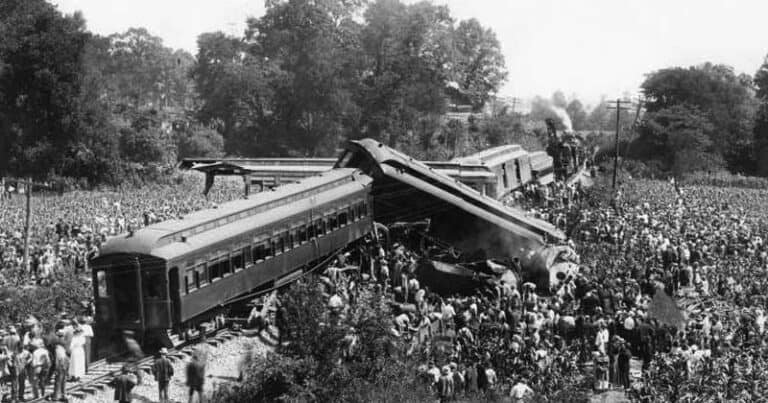The Freedom Train Brought Freedom
The years right after World War 2 were heady years for the United States. As the “Arsenal of Democracy” we had made a difference in defeating Hitler. GIs were coming home and the nation was seeing increased patriotism. It was in this atmosphere that the Freedom Train was conceived and sent criss-crossing the United States between 1945 and 1947.
The Freedom Train had 7 cars, most were display cars carrying some of the nation’s treasures. The theme of the train was, and it’s right there in the name, “freedom”. Included in the displays of founding documents and historical artifacts was a display on the burgeoning Civil Rights movement that had gotten a jump start in World War 2.

America’s Need, and a Civil Rights Movement
When the call went out, when the chips were down, America’s Black population answered the call and helped win the war. The Black population of America responded to the need, even though they were, in much of the country, still treated as second class citizens. By the end of the war the Federal government had stepped in to desegregate war factories. Although many factories desegregated at first by running separate shifts for Black and White workers.

More than 2 million Black men were on the front lines, either in Europe, the Pacific or the homefront. Black drivers and engineers formed the backbone of the US Army Transportation corp. Men and women were brought into factories they could not even visit a year before, to crank out supplies for the war.
The country had met the effort needed to win the war head on. But now there were growing pains, and outright discrimination, that left some Americans without the freedom promised by the Constitution, and the train. The National Archives has a new exhibit on the Freedom Train.

Freedom Train Closed to Some
The American South was heavily segregated at this time. Laws throughout the South mandated that Black people and White people could not mix. These so-called “Jim Crow” laws were pervasive. Theaters were segregated. Restaurants and lunch counters too. Schools were segregated, with schools for White children receiving more funding and supplies.
Private companies were also bound by these laws, and that included railroads. Throughout the South passenger station and passenger cars ghad separate, but not equal, facilities for Blacks and Whites. Trains coming from the officially unsegregated North had to stop when entering Southern states and order all Blacks to a separate car, at the back of the train.
The Freedom Train steered into the middle of this discrimination. At many stops, local law enforcement made sure that the display cars, and even lines and hours to visit, were strictly segregated. Some made the observation that the Freedom Train, while having displays on civil rights, was anything but a beacon of Freedom in the South.
Those grumblings were ignored until author and poet Langston Hughes wrote the poem “Freedom Train”. The poem pointed out the inconsistency of the Freedom Train, and the lack of Freedom afforded even by the train, “Down South in Dixie only train I see’s, got a Jim Crow car set aside for me”.
Is the poem, as published by the magazine Our World, above a little to small to read? Click on the picture to be taken to a much larger image, and we’ve included the poem in text form. Plus, we’ve found a spoken word recording, from the 1940s, of Paul Robeson reading the poem. It’s all on that additional page, just click through.
Freedom Train Forces a bit of Freedom
The foundation that ran the event at each stop and was in charge of the schedule declared they would not allow segregated stops. President Harry Truman responded too, promising that the train, from that date forward, would be desegregated or would not stop at cities and towns that insisted on Jim Crow for the Freedom Train.
Most cities on the Southern states schedule reluctantly gave in and looked the other way when Blacks and Whites stood together in lines or shared the confined space inside display cars.

But, not all cities and towns would acknowledge the lack of Freedom in their jurisdiction for the Freedom Train. Bull Connor, later famous for using dogs and firehoses against Black civil rights marchers, refused to give an inch. Selma with her later-to-be-famous Edmund Pettus bridge also refused to set aside its Jim Crow laws.

Those two cities, among several others in the “Deep South”, were taken off the Freedom Train schedule. The Freedom Train, with some prodding, stayed true to its mission, to its lofty goal of freedom for all. Foreshadowing the many struggles of the 1960s, at least this effort at making the South heel was moderately successful.
The Freedom Train did indeed bring freedom to some cities, for a few days at least, in the South.

Railfan and model railroader. Writer and consumer of railroad news and information.





